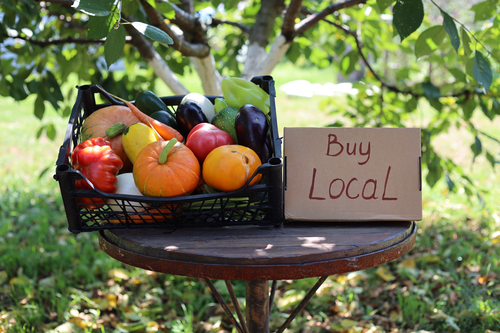
As the global community grows more conscious of climate change, individuals often grapple with how they can personally contribute to a healthier planet. A common mantra, “eat local,” seems to imply a straightforward solution to reducing one’s carbon footprint.

However, recent analysis reveals that the true environmental impact of our diet lies not in the miles food travels, but in the types of food we consume.

At the heart of this conversation is the understanding that food production accounts for a quarter of the world’s greenhouse gas emissions. The belief that eating locally sourced food inherently lowers carbon footprint overlooks the key factor of production-related emissions.

Studies have shown that greenhouse gas emissions from transportation make up a very small amount of the total emissions from food, which means that the focus must shift from where food is sourced to how it is produced.

As illustrated by Joseph Poore and Thomas Nemecek’s large-scale meta-analysis of global food systems, published in Science, the production phase, including land use and farm-stage emissions, accounts for the lion’s share of a food item’s carbon footprint.

For example, producing a kilogram of beef emits a staggering 60 kilograms of greenhouse gases, while plant-based alternatives such as peas emit only one kilogram per kilogram of product.

Thus, food choices, particularly the consumption of meat and dairy, are far more impactful on the environment than the distances that food items travel from farm to table.

In fact, in a groundbreaking paper by researchers Christopher Weber and Scott Matthews, it is suggested that substituting one day per week’s worth of calories from beef and dairy products with alternatives like chicken, fish, eggs, or plant-based options could reduce greenhouse gas emissions more significantly than an entirely local diet.

It is important, however, to address the exceptions. Foods that are air-freighted, which include highly perishable items such as certain fruits and vegetables, do have a considerable carbon footprint due to the high emissions associated with air transport.

Consumers looking to further minimize their carbon footprint should consider avoiding these air-freighted foods.

Furthermore, the idea of “food miles” has evolved to encompass not just the transportation of the final product, but the movement of all inputs in the food production process, including fertilizers and animal feed.

Nevertheless, while food miles can provide some indication of a product’s environmental impact, they are not the sole determinant.

As counterintuitive as it may seem, in some cases, importing food from abroad can be more carbon-efficient than producing it locally, particularly when local production requires energy-intensive methods like heated greenhouses.

Ultimately, evidence points toward dietary shifts as the most effective strategy for individuals looking to decrease their carbon footprint. By reducing consumption of high-impact foods like red meat and dairy and opting for more plant-based meals, individuals can significantly diminish their contribution to greenhouse gas emissions.

In this pursuit of a more sustainable lifestyle, the nuance of food production and its environmental costs invites us to reflect not just on the origin of our meals, but the broader implications of our dietary choices.

